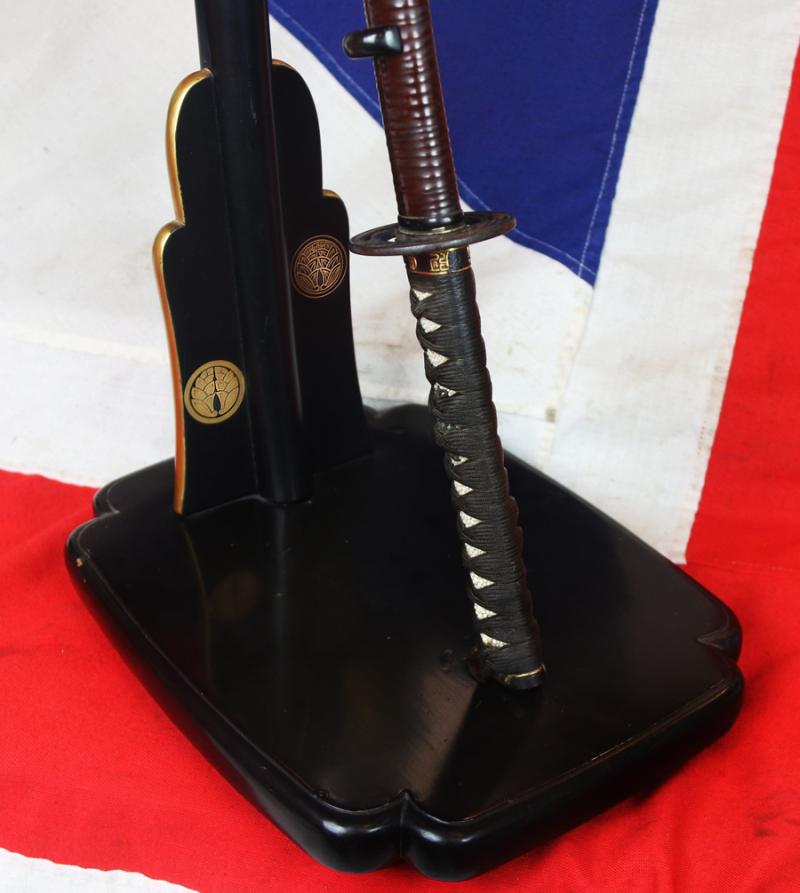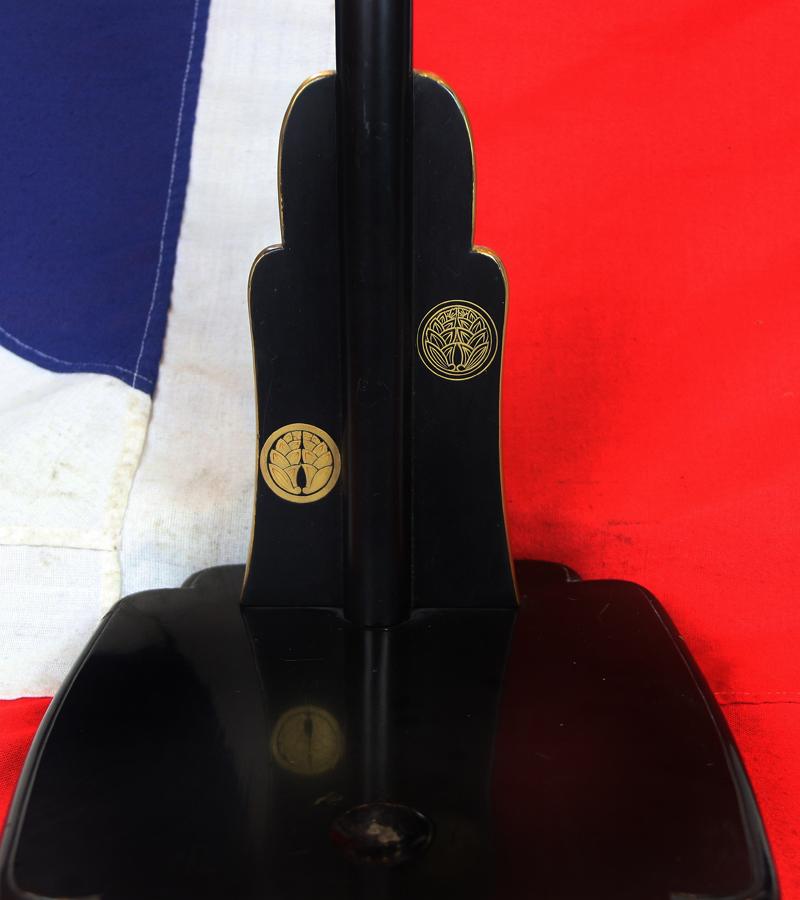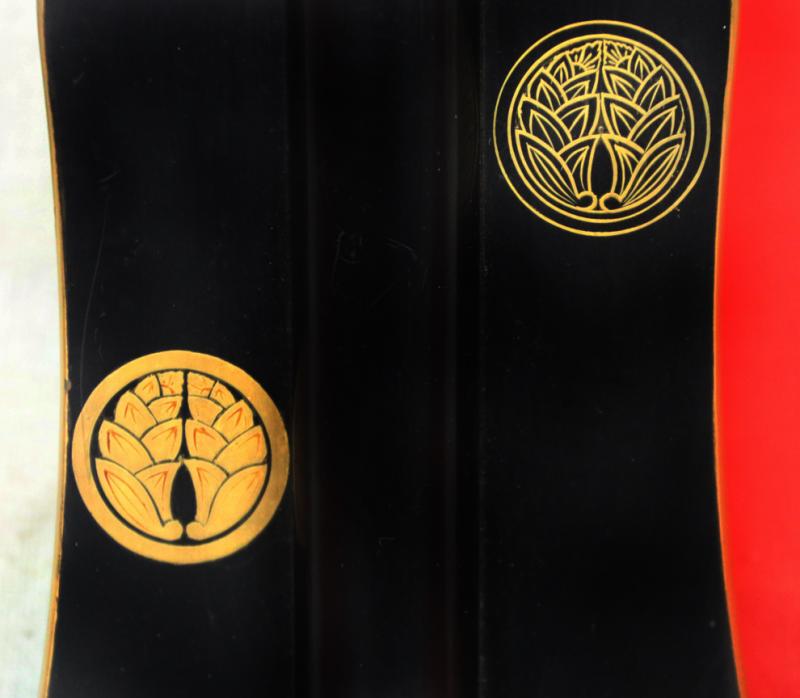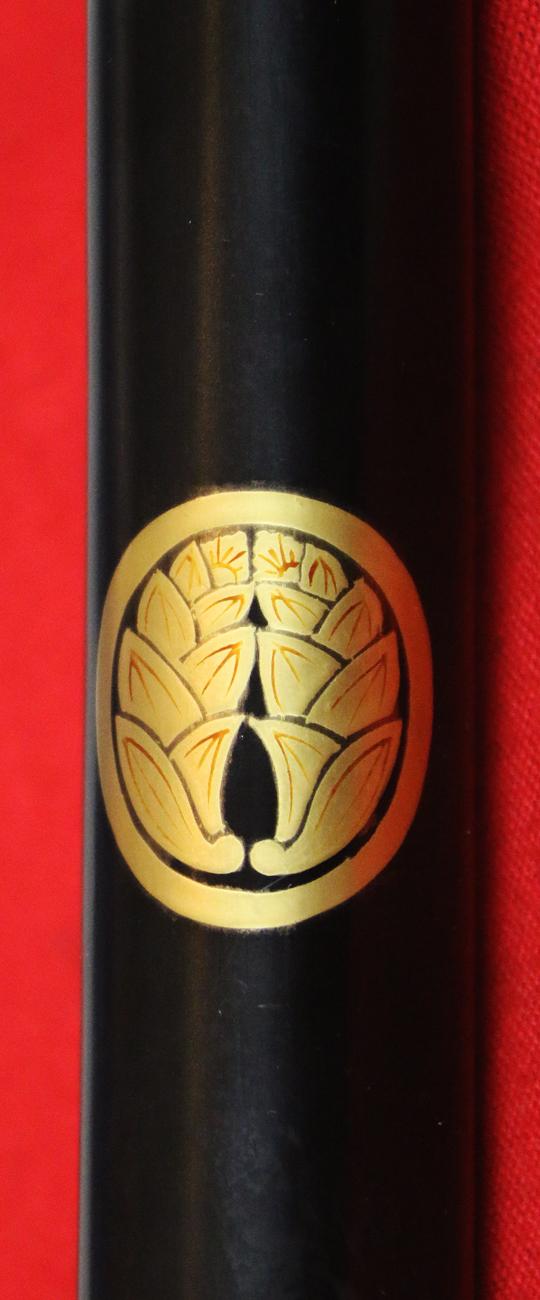A Most Beautiful Tachi-kake Samurai Sword Stand With Maki-e Gold Nabeshima Clan Mon
In black urushi lacquer, and It bears two mon, 'Daki Myoga' mon of the great Nebeshima clan. Two opposing ginger plants.
the Nabeshima clan did not take the name Nabeshima, however, until the late 15th century, when Shoni Shigenao established himself at Nabeshima in Hizen province (today part of Saga City, Saga prefecture). Later, in the Sengoku period (1467-1603), the Nabeshima were one of a number of clans which clashed over the island. The Nabeshima sided with the Ryuzoji clan against the Otomo clan, though this ultimately ended in failure and the death of Ryuzoji Takanobu at the 1584 battle of Okita Nawate. Several years later, however, the Nabeshima recovered power and prominence by aiding Toyotomi Hideyoshi in his 1587 invasion of Kyushu; Nabeshima Naoshige was granted the region of Saga as his fief, as a reward for his efforts. Naoshige also contributed to Hideyoshi's invasions of Korea in the 1590s.
The clan initially aided Ishida Mitsunari against Tokugawa Ieyasu in the Sekigahara Campaign in 1600. However, they switched sides to support the Tokugawa, who were ultimately victorious, before the campaign had ended, battling and occupying the forces of Tachibana Muneshige, who was thus prevented from contributing directly to the battle of Sekigahara. Though regarded as tozama daimyo ("outside" lords), and assigned particularly heavy corvee duties, the Nabeshima were allowed to keep their territory in Saga, and in fact had their kokudaka increased. The clan's forces served the new Tokugawa shogunate loyally in the years which followed; they remained in Kyushu during the 1615 Osaka Campaign as a check against a possible rebellion or uprising by the Shimazu clan, and aided in the suppression of the Shimabara Rebellion of 1637. In recognition of their service, members of the clan were granted the prestigious family name Matsudaira in 1648.
During the Edo period, the clan's Saga domain became quite famous.
28 inches high overall, base 10 inches wide x 13.25 depth inches
Code: 24456





